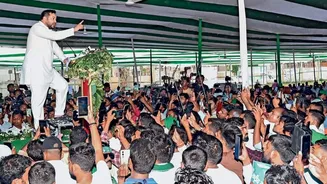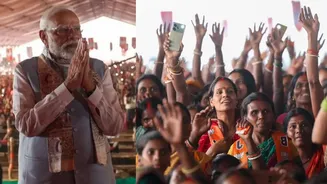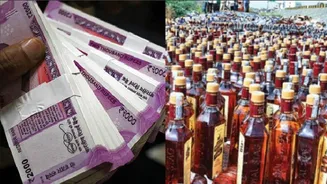Chapra's Electoral Climate
The political atmosphere in Chapra, Bihar, is described as being in a state of flux. The report on the ground there before the upcoming elections highlights
the views of the populace, who are expressing dissatisfaction over governance and employment prospects. The focus of the report is the shifts in the local political landscape, and the challenges faced by the main political parties. These parties are striving to gain the favor of the people amid these challenges. The piece emphasizes the importance of local perspectives in influencing electoral outcomes, demonstrating how localized issues are shaping political preferences and the direction of the election. This reveals the nuanced nature of electoral dynamics, where local problems can have a huge effect on larger political narratives.
RJD's Foothold in Sitamarhi
The article suggests that the Rashtriya Janata Dal (RJD) is gaining traction in Sitamarhi. This is mainly due to the voters' complaints about job availability and government performance. As a result, the RJD has a chance to benefit from these issues. The people's dissatisfaction is becoming a crucial element in deciding how they will vote. Political analysts are examining the impact of the voters' perspectives and analyzing how they are affecting the election. This highlights the significance of addressing people's concerns in order to succeed in the polls. The report underlines that the public's viewpoint on critical issues can influence the election's direction.
Key Campaign Issues
Several issues are shaping the narrative surrounding the Bihar elections, including the central focus on governance, job opportunities, and local development. These issues are directly impacting the electoral outcomes. There is considerable debate over who will take action to resolve these concerns if they are chosen. The report highlights how these issues are at the forefront of the public's concerns and how they are impacting the political dialogue. The narrative around the election is being shaped by these significant concerns, which are also influencing how people are voting. The political parties' capacity to respond to these pressing issues will determine their degree of success. Consequently, the electoral process is being influenced by the emphasis on governance, jobs, and development.
Challenges for Parties
The main political parties are facing significant difficulties as they try to win over the voters. A key challenge is navigating the complaints made by the electorate over governance and the need for new jobs. The parties must persuade voters that they are the best candidates to address these issues. They have to do this in order to gain support. Local issues and voter opinions are becoming more important, which increases the complexity for campaign strategists. Parties must adjust their strategies to reflect these evolving political dynamics. Each party's ability to navigate these challenges will have a direct impact on its prospects of winning. This highlights the importance of adapting to local situations and acknowledging voter concerns.
Electoral Landscape Overview
The upcoming Bihar elections reveal a competitive political landscape. The RJD is gaining ground in certain areas. At the same time, the major parties are working to reach out to the electorate. The report indicates how critical local problems are, which are having a direct influence on the opinions of the electorate. The parties' abilities to tackle issues of governance and employment will be essential. The report highlights a dynamic electoral environment. This is shaped by both local concerns and the bigger political agenda. The results of the upcoming Bihar elections will be decided by voter views and each party's ability to engage with these views.















